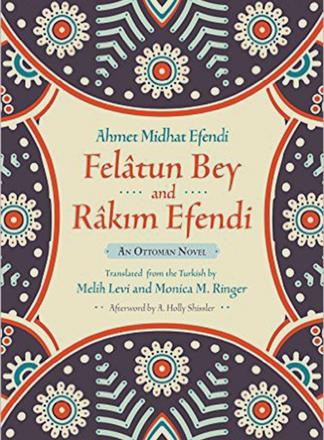You are here
The worlds of Midhat Kamal
By Sally Bland - Mar 01,2020 - Last updated at Mar 01,2020

The Parisian
Isabella Hammad
New York: Grove Press, 2019
Pp. 563 pp
In the last few decades, there has been a wave of hybrid literature, memoirs or novels by or about persons of double culture by virtue of their parentage or migration, or both. Most of these books are contemporary. Isabella Hammad’s “The Parisian”, in contrast, focuses on someone whose life began during Ottoman times. The book’s protagonist, Midhat Kamal, who sailed to France in 1914, is modelled on the author’s great grandfather. Though she never met him, her childhood and youth were infused with stories her Palestinian grandmother told about her Nablus-origin family. Among them, Midhat obviously captured her imagination. By telling his life story in fictionalised form, she also presents a crucial slice of Palestine’s history.
Born in London to a British-Irish mother and Palestinian father, Hammad didn’t visit Palestine until she was in her early twenties. When she did, she stayed long enough to gather more stories, information and memories from which she wove this panoramic historical novel. With roots akin to oral history, it gives an insider’s account of Palestinian life during World War I and its aftermath, most especially the 1936 general strike and peasant revolt. Written in a mature, elegant style reminiscent of classical novels, it is Hammad’s first novel.
As with most double-culture persons, Midhat is something of an outsider by his own definition and that of others, both in France and Nablus. Arriving in the home of a professor at Montpellier University, where he is to stay while studying medicine, he strives hard to fit in, to improve his French and adopt French customs. One is reminded of Egyptian writer Taha Hussein, who studied at Montpellier University at roughly the same time, but Hussein married the French woman he fell in love with, whereas Midhat’s budding romance with the professor’s daughter, Jeannette, is aborted by an altercation with her and her father, leaving him with a sense of nostalgia which follows him all his life.
With this altercation, Hammad introduces the theme of colonialism into the novel, for Midhat discovers that he is not really accepted on equal footing but instead is being “studied” by the professor in an insidious, Orientalist way. Later in the novel, a parallel to the French professor appears in the form of a French priest who is “studying” Nablus, while also acting as an informer to the British Mandate authorities. In between, the policies of the French and British repressing the Arabs’ independence struggle speak for themselves.
After the break with his French hosts, Midhat escapes to Paris where he spends four years as a history student, leading a bohemian life and debating with fellow Arab expatriates what is to be done in the face of the colonial division of Greater Syria and the looming Zionist threat to Palestine. During this period, “with all the talk of origins and truth in his university essays and among his Syrian friends, Midhat was learning to dissemble and pass between spheres and to accommodate, morally, that dissemblance through an understanding of his own impermanence…” (p. 166)
For as much as politics and history is prominent in the story, Midhat’s inner life is what holds the plot together. Even before his sojourn in France, he seems fated to stand apart. His mother dies when he is only two, and he is raised by his irrepressible grandmother, his father spending more time in Cairo with his new wife, expanding his clothing business there. Nonetheless, Midhat tries to be positive about returning to Nablus, though he worries about “his place in that constellation of purpose and tradition which had for the last five years in France been suspended, when with a freedom born of strangeness he had bypassed the laws of family and dallied in the alleyways of chance and rapture”. (p. 190)
Midhat does what is expected of him — taking over his father’s textile shop, marrying into a prominent Nabulsi family and having a family of his own. Yet, he often seems to be just going through the motions, trying to please others, his heart elsewhere — and still sporting French-style attire. Though he is generally well-liked, some are wary of him, dubbing him “Al Barisi”. “Respectful affection in Nablus had shaded into malice once the Syrians rose up against the French Mandate… To be a Parisian in Nablus was to be out of step with the times, locked in an old colonial formula…” (p. 507)
Indeed, Midhat becomes increasingly oblivious to politics, most often retreating into his own world, even as his cousins and best friends join the struggle.
Harnessing telling details, Hammad paints credible scenes of contrasting lifestyles in France and Palestine in the early 20th century. The dialogues and descriptions of social interaction are often so subtle as to require the reader to think for him/herself about their implications. Ambivalence is pervasive, whether in Midhat’s attitude towards life or France, or others’ attitudes towards him, beginning with his father, then Jeannette. The novel is also a tribute to Nablus, long regarded as a bastion of Palestinian nationalism, where people, despite clear class divisions, pull together during the 1936 revolt.
That Hammad wrote this novel before she turned thirty is extremely impressive. It shows that she mastered not only important historical trends, but also the contours of human emotions, not to mention the writing skills involved in plotting such a complex story.
Related Articles
Felatun Bey and Rakim EfendiAhmet Midhat EfendiTranslated by Melih Levi and Monica M. RingerNew York: Syracuse University Press, 2016Pp.
AMMAN — Columbia Global Centres on Tuesday hosted author Isabella Hammad for a book reading and discussion of her debut novel “The Parisian”
The Glass CastleJeannette WallsNew York: Scribner, 2017Pp.



















